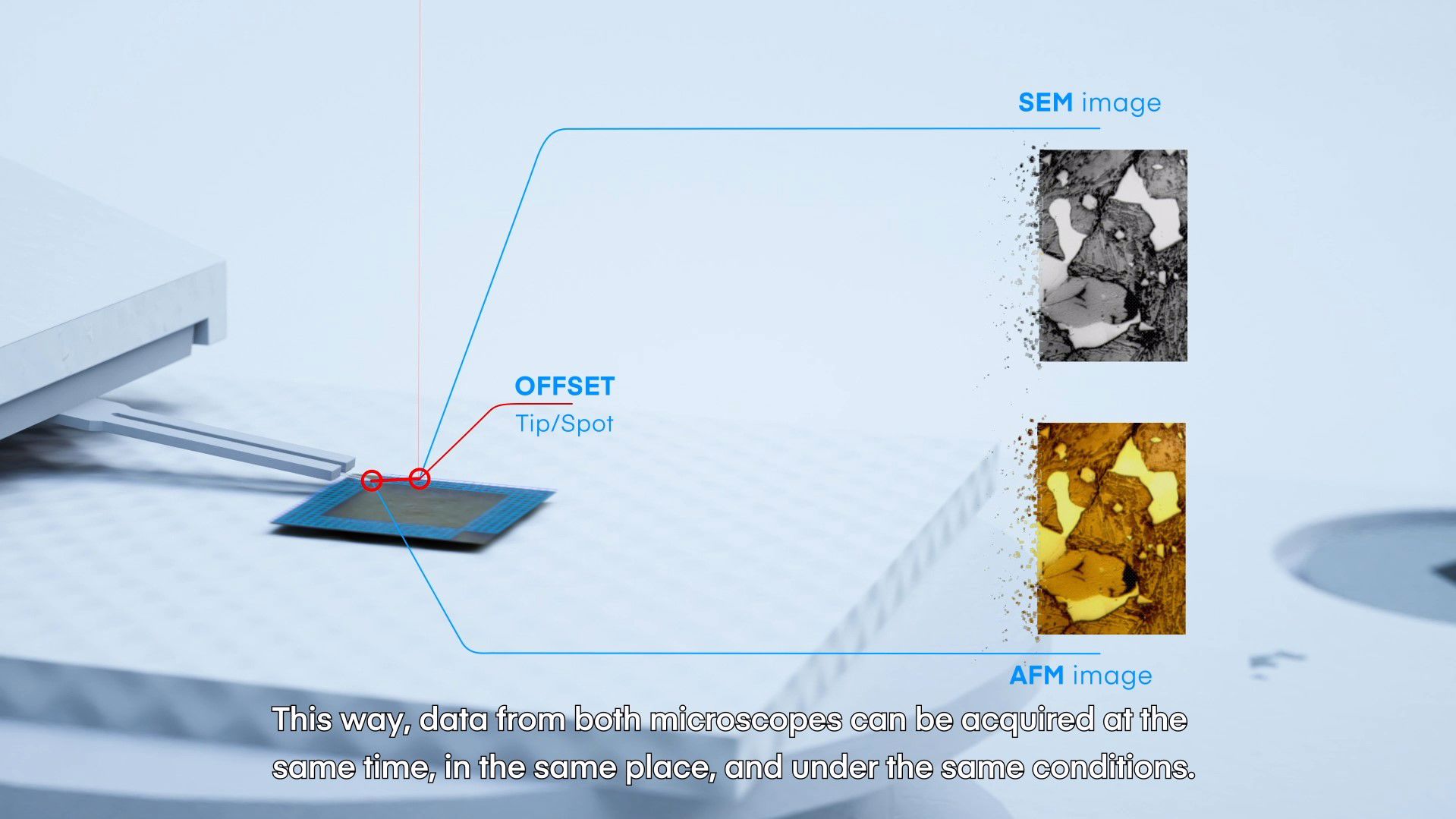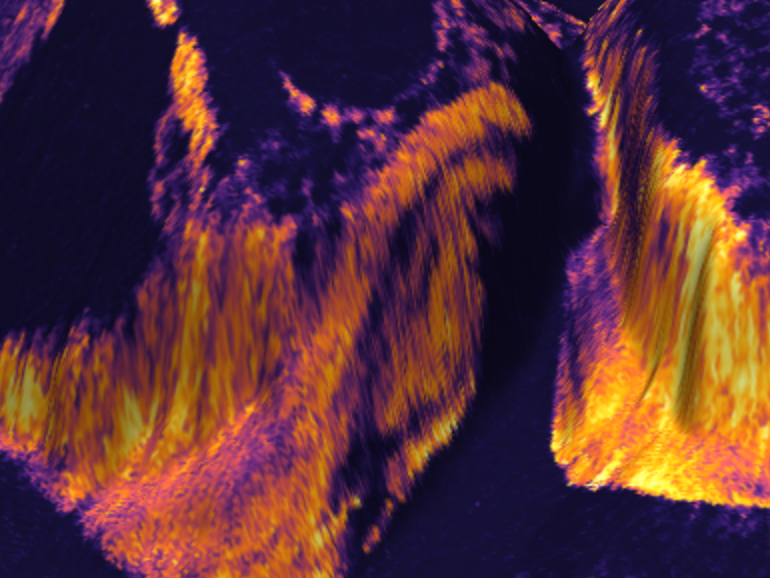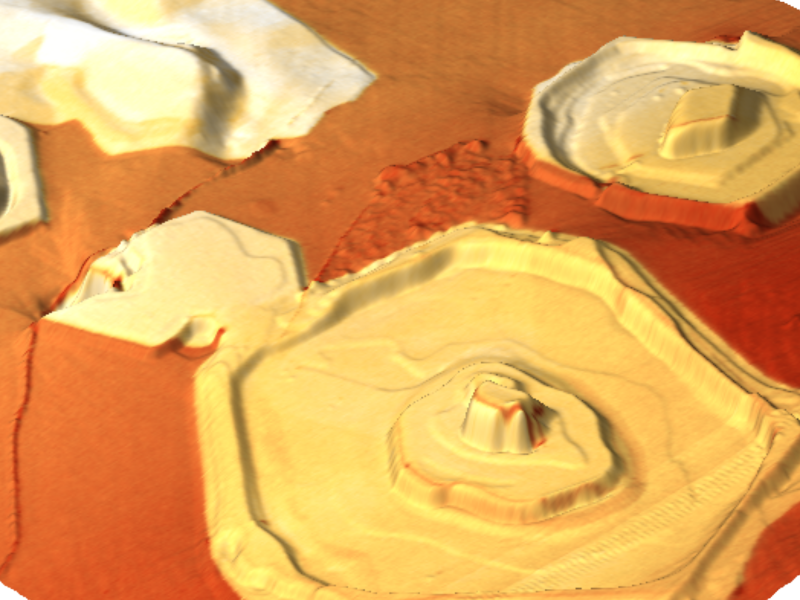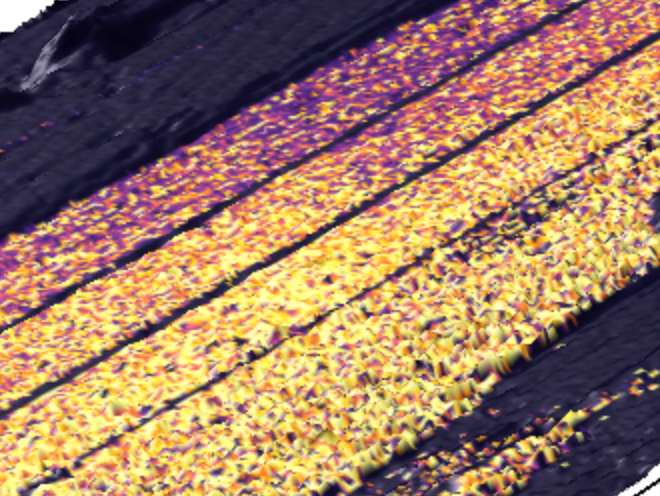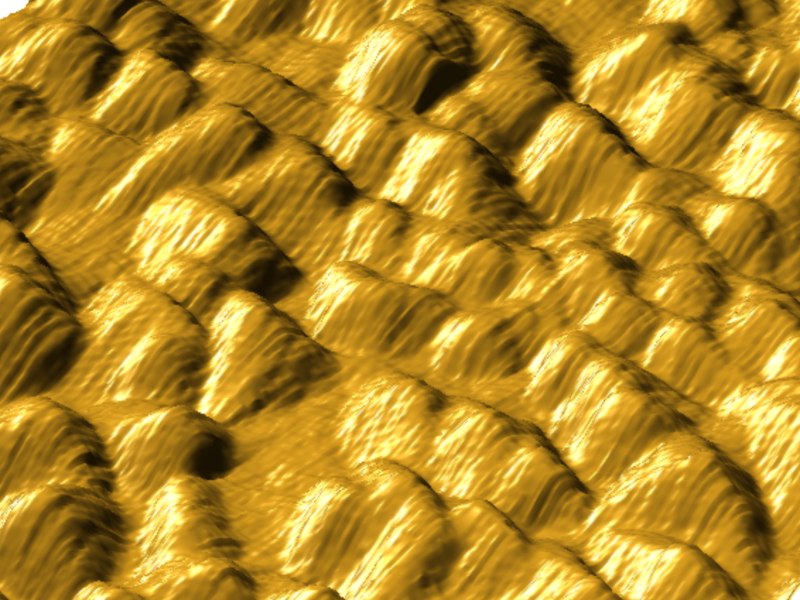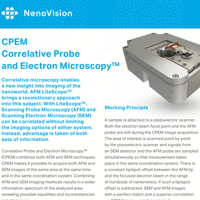CPEM - Correlative Probe & Electron Microscopy
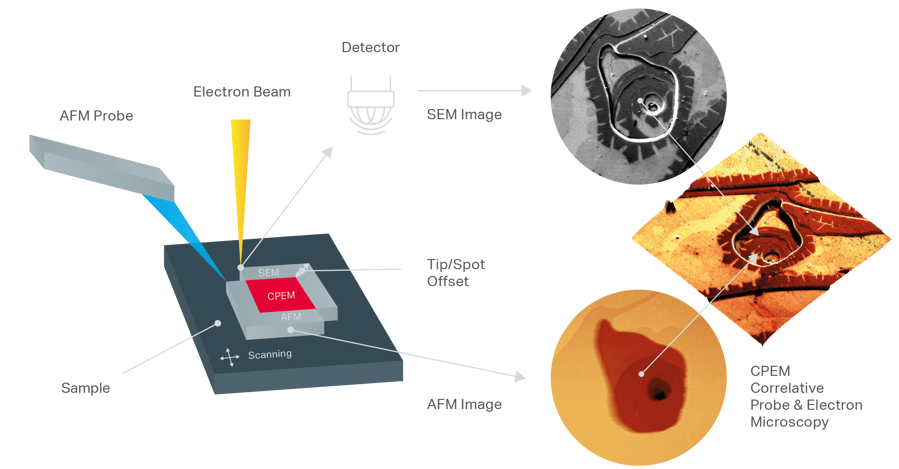
Correlative Probe & Electron Microscopy, shortly CPEM, is technology combining Atomic Force Microscopy (AFM) with Scanning Electron Microscopy (SEM). It allows simultaneous detection and acquisition of signals from both instruments and it's one of the principal branches of correlative microscopy.
How does it work?
During scanning, the SEM electron beam points close to the AFM tip with a constant offset. They both remain static, while the sample is moving thanks to the LiteScope's piezo scanner. This way, data from AFM and SEM microscopes can be acquired at the same time, in the same place, and under the same conditions.
Key CPEM advantages
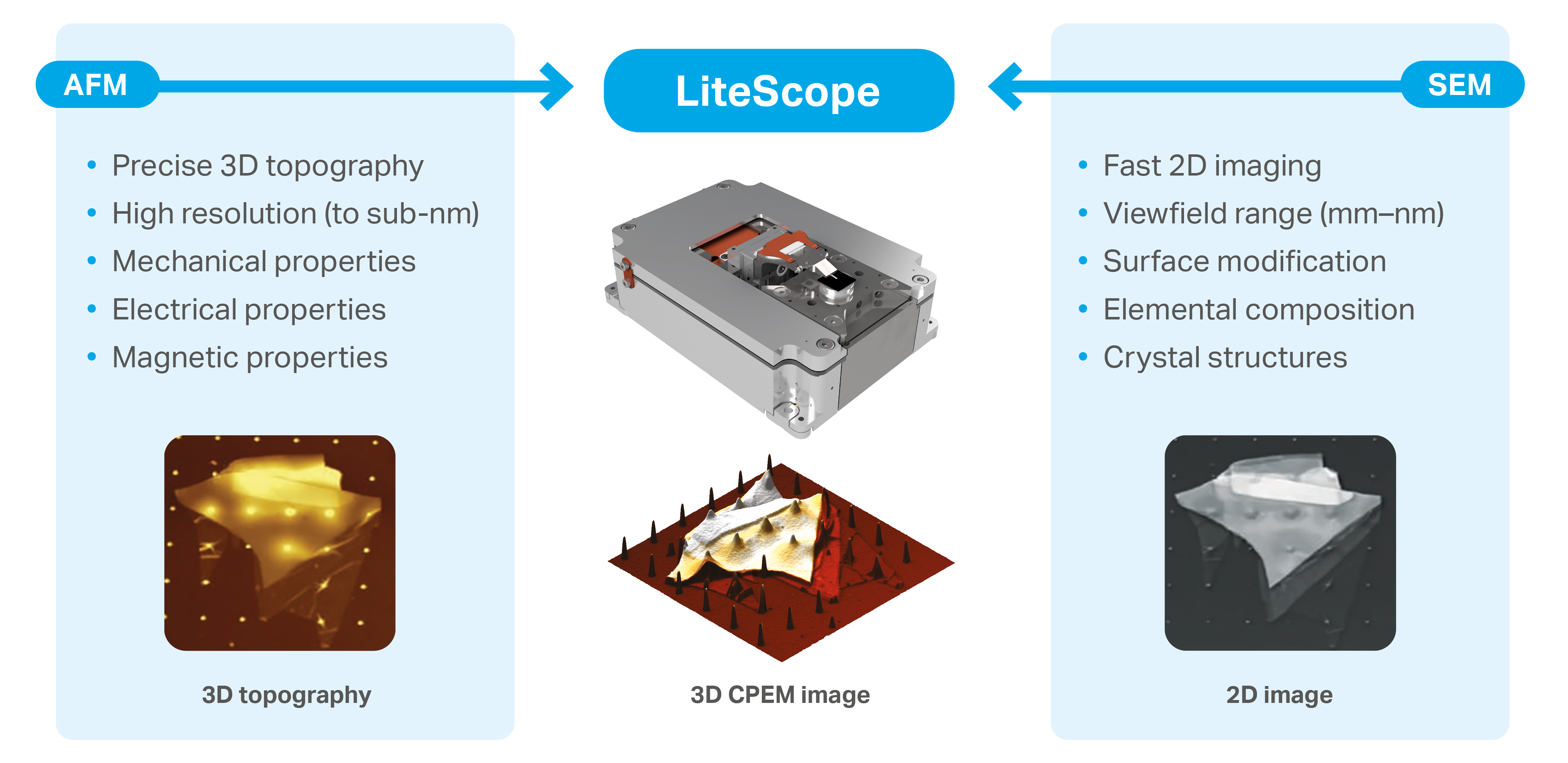
- Simultaneous multimodal data acquisition
Unique technology developed by NenoVision enables simultaneous acquisition of AFM (Topography, C-AFM, MFM, KPFM...) and SEM (SE, BSE, EBIC) channels. - Unprecedented precision of image correlation
CPEM allows rigorous multimodal data correlation with semi-automated image alignment, assuring its unprecedent precision. - Time efficiency
Using both AFM and SEM in a single scan, in the same place and under the same conditions significantly reduces the processing time compared to other correlative techniques that work with images acquired separately.

Want more info? Feel free to...
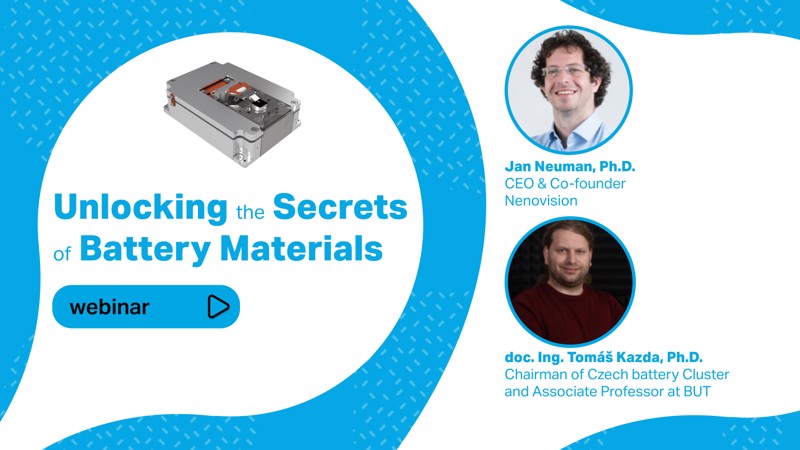
Webinars
|
12. 03. 2024
Unlocking the Secrets of Battery Materials: A Dive into AFM-in-SEM Characterization Webinar
Read the article
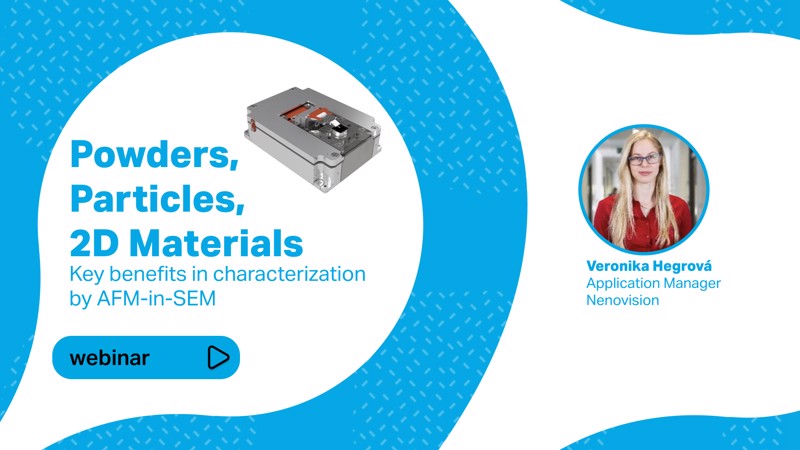
Webinars
|
28. 02. 2024
Key benefits in the characterization of Powders, Particles, and 2D materials by AFM-in-SEM
Read the article
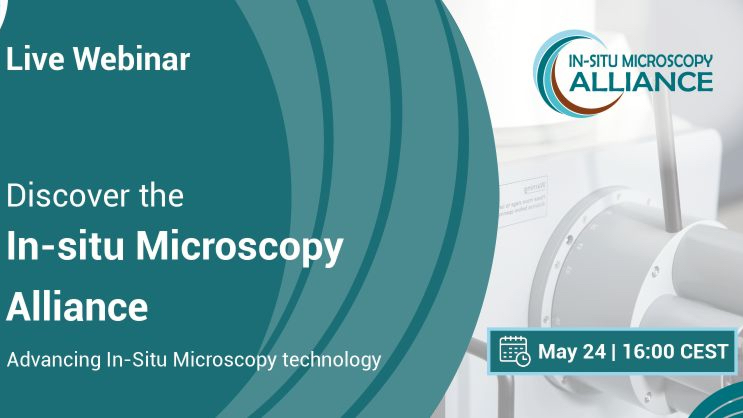
Webinars
|
24. 05. 2023
In-situ Microscopy Alliance webinar: The introduction of IMA
Read the article

